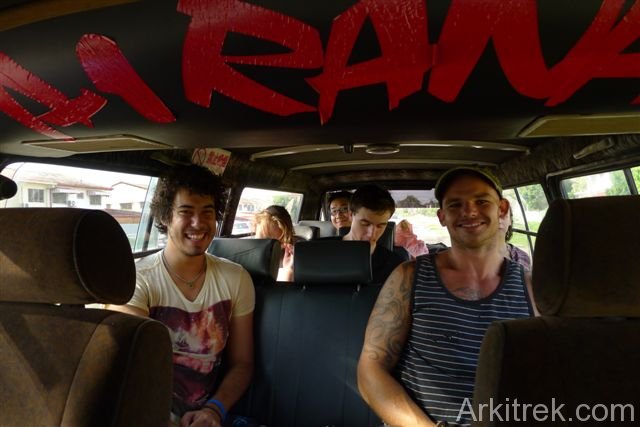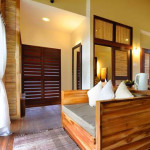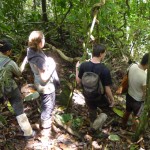The Arkitrek Manifesto – Our Progress So Far
“We believe the accepted model of capitalism that necessitates endless growth and deserves the blame for the destruction of nature must be displaced”
Yvon Chouinard, from his book ‘Let My People Go Surfing’
Arkitrek wants to operate as a successful business and generate profit, but how that profit is used, and the motivation for making that profit is driven by social, rather than capitalist objectives. How we define our social objectives and how we measure the success of these though, has been the subject of much research and long debate over the last year. We finally feel like we are getting somewhere. Below is the first draft of the Arkitrek Manifesto that seeks to outline who we are and what we stand for. It is by no means complete, but it is posted here for the scrutiny of the readers.
*****
Arkitrek is a three-headed beast. It engages in commercial practice, research and development and experiential learning programmes. All these areas are co-dependant. This co-dependency is largely knowledge and resource based. The three fields are defined in more detail as:
Private Practice
Projects that enhance environmental stewardship
Rural Setting – Projects that minimise impact; create awareness; provide education, protect environment
Urban Setting – Building reuse and regeneration; urban regeneration; resource protection, infrastructure improvement projects
Research and Development
Provide resources for private practice and experiential learning programmes.
Seek to reduce reliance on harmful materials.
Seek to replace scare materials.
Experiential Learning
Involves students, new graduates and enthusiasts with real clients and projects.
Seek to involve education in every project possible.
Encourage design/build learning through open camps and university partnerships.
Although Arkitrek started in Sabah, Arkitrek is not country or region specific. Arkitrek could run camps in Scotland; work in Africa or run projects in South America. However, Arkitrek is not an international jet setter. There would have to be a sustainable reason for Arkitrek to be there.
Arkitrek is about trekking in the forest, camping on the beach, climbing, exploring, bird watching. In the future it could also be about sailing, fishing, surfing, paragliding. It is about combining a love of the outdoors with a promotion of environmental stewardship through design work and design facilitation. It is about pursuing individual loves in the context of work. This allows for flexible working hours, flexible leave time, and an encouragement to pursuing individual environmental and social concerns. Each employee has equal right to suggest projects that encompass these areas of interest.
*****
Arkitrek is guided by the following principles:
Touch Lightly
There must be a sound reason and necessity for each structure built. If we must build at all we must minimize the effect our buildings will have on the environment.
Be Selective in Clients
Each client taken on must achieve an overall positive assessment of character. No client can tick every box but each client must be accomplishing more good than harm and be showing a continuous attempt to improve.
Protect Natural Resources
Each project avoids acutely endangered resources.
Projects are taken on that will by their existence protect natural resources.
Waste in building and practice is reused and/or limited as much as possible.
R & D of materials will seek to minimize negative impact of materials and implement new material ideas.
Be Inclusive
Arkitrek is not just for architects. So far it has also involved engineers, builders, community tourism operators, foresters, botanists, graphic designers, handicraft aunties. Out of these partnerships great things have been accomplished and a more vibrant community or network arises. Out of the most unlikely of partnerships new ideas are born.
Give Ownership
Giving ownership of their project to either the client, building users or wider community will enable environmental stewardship. Without ownership a marine conservation building will lie dormant. With ownership a building has a chance of fulfilling its role.
Giving ownership to students is a way to help them feel passionate about their learning and the principles of Arkitrek. It also fosters greater ideas.
Nothing is Free
Time and skills must be valued. Part of ownership is taking responsibility and realising value.
Work that cannot be paid for should be offset or supported in other ways.
Volunteers are not free either; Arkitrek has the responsibility to give them the best education or learning experience possible.
Be Self Critical
In aesthetics, in sustainable design measures, in social criteria or in quality of education; being self critical is the only way to remain true and to keep on improving.
Related posts









[Ian: this comment is from Loong by email)
No worries Ian,
By the way, I have read The Arkitrek Manifesto and I hope I can contribute some of my views though I have not really involved in the project yet. haha
What I see from Arkitrek is that it has a potential growth ability to become one of the organisation that promotes and propagates sustainable and indigenous building techniques while remaining in private practice by conducting workshops to architects and students on real projects where charged fees can ensure financial sustainability of the practice itself while being able to share the skills to like minded people. Malaysia does not lack of like minded people, just lack of platform where they can engage and contribute with, Arkitrek is one of the pioneering platform, and with the propagation of knowledge and values it is possible we can see more similar platforms (more allies) arise in the future for good.
The erosion of indigenous sustainable building practice is due to the building bye-laws which is meant to cater for urban modern buildings which somehow inappropriately applies to the rural area as well. This situation is quite a threat in terms of preserving indigenous building knowledge and promoting concrete-alternative construction. This is more evident in West Malaysia with traditional Malay house as one of the erosion examples.
Arkitrek has the potential push its sustainable activism agenda further as an advocate to gain more tolerance to wood and other non conventional but sustainable materials from the bye-laws with other organisations like Malaysian Institute of Architects, Malaysian Timber Council and etc.
These are some of my views I would like to share, some might sound unrealistic but hope you find some of it helpful.haha. Have a good time in UK!
Warm regards,
Loong